Name our City Bird!
Consultation has concluded, the Crow and Cardinal are the winners! View the results.
 What will be Kingston’s City Bird?
What will be Kingston’s City Bird?
Kingston is home to a wide variety of bird species. Some live here year-round, while others pass through during seasonal migrations. Now we’re asking you to help choose one bird to represent our city.
To support Kingston’s bid to become a certified Bird-Friendly City in 2025, we’re inviting the public to help choose the bird that best symbolizes our community. A list of 16 locally found bird species has been selected by our Bird-Friendly City team. These birds are native species and commonly found in the wild in various parts of the city. You’re invited to tell us which bird you think should win by taking the survey below!
Your input helps raise awareness about the importance of protecting birds in our region and celebrates the birds that call Kingston home! The winning bird will be announced on Oct. 11 to coincide with World Migratory Bird Day and will become the official City Bird.
Learn more about Bird-Friendly City certification by visiting Nature Canada’s website. This certification is awarded to communities that show a commitment to reducing the threats to birds in their municipality.
 What will be Kingston’s City Bird?
What will be Kingston’s City Bird?
Kingston is home to a wide variety of bird species. Some live here year-round, while others pass through during seasonal migrations. Now we’re asking you to help choose one bird to represent our city.
To support Kingston’s bid to become a certified Bird-Friendly City in 2025, we’re inviting the public to help choose the bird that best symbolizes our community. A list of 16 locally found bird species has been selected by our Bird-Friendly City team. These birds are native species and commonly found in the wild in various parts of the city. You’re invited to tell us which bird you think should win by taking the survey below!
Your input helps raise awareness about the importance of protecting birds in our region and celebrates the birds that call Kingston home! The winning bird will be announced on Oct. 11 to coincide with World Migratory Bird Day and will become the official City Bird.
Learn more about Bird-Friendly City certification by visiting Nature Canada’s website. This certification is awarded to communities that show a commitment to reducing the threats to birds in their municipality.
Consultation has concluded, the Crow and Cardinal are the winners! View the results.
-
Engagement results
Why we engaged
Kingston is applying to be a certified Bird-Friendly City in 2025. To support the certification process, the City chose to select an official City Bird. Through a public engagement, residents were able to choose from one of 16 birds to represent Kingston.
The list of birds was chosen by the City’s Bird Team, which includes representatives from the City of Kingston, educational institutions, local community groups and environmental organizations. The short-listed birds were identified as native species commonly found in the wild in various parts of the city.
How we engaged
A survey was published on Get Involved Kingston from Sept. 11 to Oct. 3. Participants were invited to select one of 16 birds that they felt represented Kingston. Participants were able to choose “Other” as an option and submit a bird not on the list.
A display was set up at the Seniors’ Centre and participants were able to choose by ballot which bird they felt represented Kingston. The ballot box was on display from Sept. 29 to Oct. 3.
Information about the engagement was shared with the Limestone District School Board and distributed to school administrators for promotion.
The engagement was promoted with the community in a variety of ways including:
- Social media posts on Facebook, Instagram and X
- News release sent to media and community news subscribers
- Content in weekly Get Involved Kingston newsletter
Who we heard from
-
1,652 participants completed the survey
- 80 participants submitted honourable mentions
- 188 ballots were from in-person voting
- 6,600 aware participants visited the project page to learn more
- 405 participants engaged with the City for the first time on Get Involved Kingston
- Location of respondents
- 27% Southwest Kingston (K7M)
- 24% Central-East Kingston (K7K)
- 18% Central-South Kingston (K7L)
- 11% Northwest Kingston (K7P)
- 6% Other (Loyalist Township, Frontenac County, Lennox & Addington County, Prince Edward County, Gananoque, Lanark, South Leeds and Grenville, Brockville, Belleville, Ottawa, Toronto)
- 14% chose not to respond
 Figure A: Participants' postal codesWhat we heard
Figure A: Participants' postal codesWhat we heard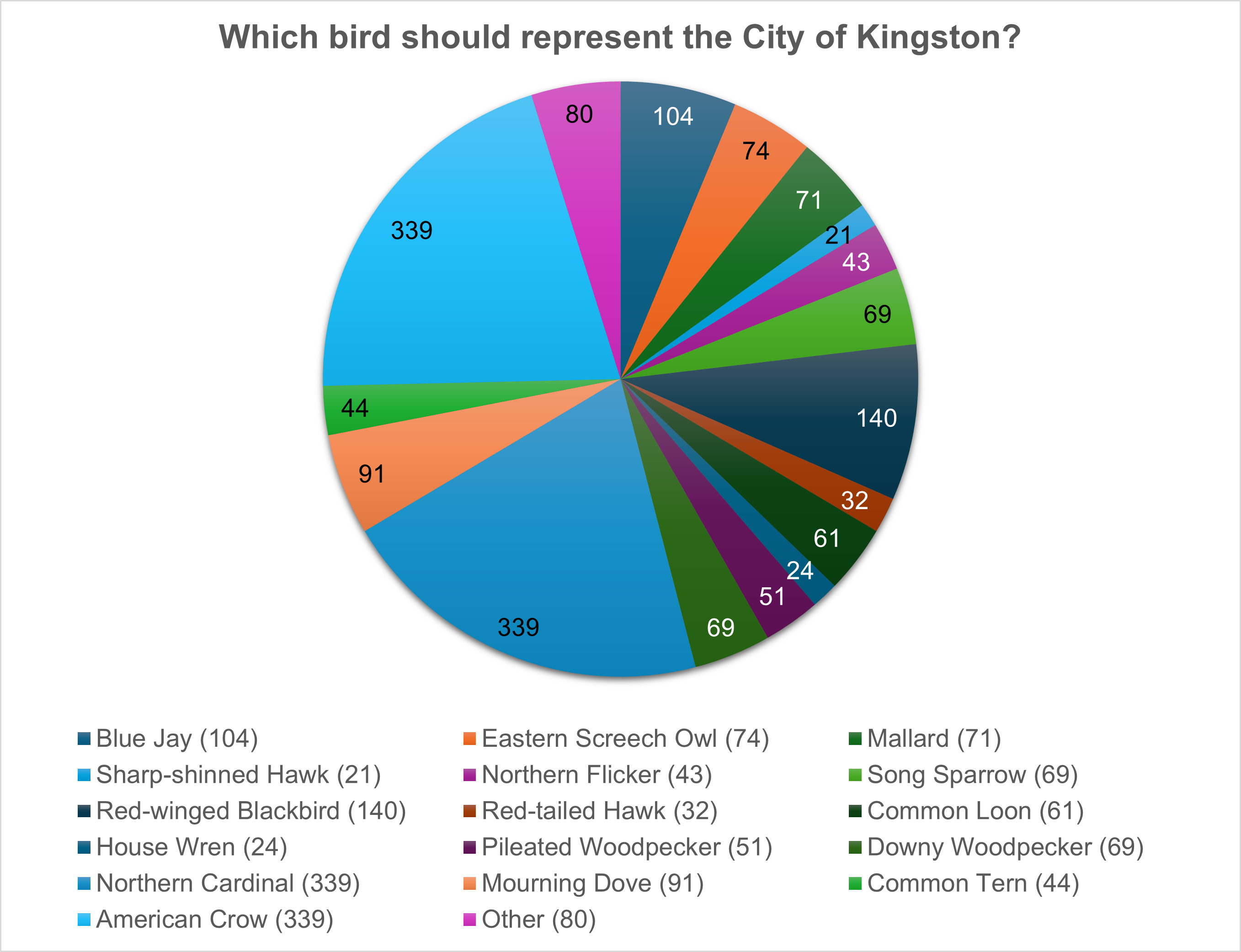 Figure B: Voting results
Figure B: Voting resultsThe birds that received the most votes were:
- Cardinal & Crow: 339 (tie)
- Red-winged Blackbird: 140
- Blue Jay: 104
- Mourning Dove: 91
Participants were able to select “Other” as a poll option and provide the name of a bird they thought should represent Kingston.
Honourable mentions include:
- American robin
- Bald eagle
- Belted kingfisher
- Black-capped chickadee
- Bobolink
- Canada goose
- Common grackle
- Cormorant
- Eastern kingbird
- European starling
- Goldfinch
- Great blue heron
- House finch
- Merlin
- North American osprey
- Nuthatch
- Raven
- Rock dove
- Ruby-throated hummingbird
- Sandhill crane
- Seagull
- Swan
- Turkey vulture
- White ibis
Results
The City announced the Cardinal and the Crow as joint official City Birds at the Kingston Fall Birding Festival on Saturday, Oct. 11, to coincide with World Migratory Bird Day.
 Kingston Councillor Gregory Ridge and Director of Public Works and Solid Waste Karen Santucci address a crowd at Doug Fluhrer Park on Oct. 11.
Kingston Councillor Gregory Ridge and Director of Public Works and Solid Waste Karen Santucci address a crowd at Doug Fluhrer Park on Oct. 11.Kingston has submitted its application to become a certified Bird-Friendly City and we await the decision.
Thank you to everyone for your interest in this engagement. Kingston’s Bird Team will continue to raise awareness about local species and action our commitment to protecting birds and their habitats.
-
You caw-t us! You may now vote for American Crows
You caw-t us! We overlooked the American crow in our short list of potential picks for Kingston's official City Bird. Thanks for talon us how much you wanted the crow as an option. Make sure to caw-st your ballot before Oct. 3!
Did you vote on Sept. 11 or 12 before we updated our list and wish to change your vote? Please email us at GetInvolvedKingston@CityofKingston.ca before Oct. 3 so we can update your selection.
-
Learn about the birds of Kingston
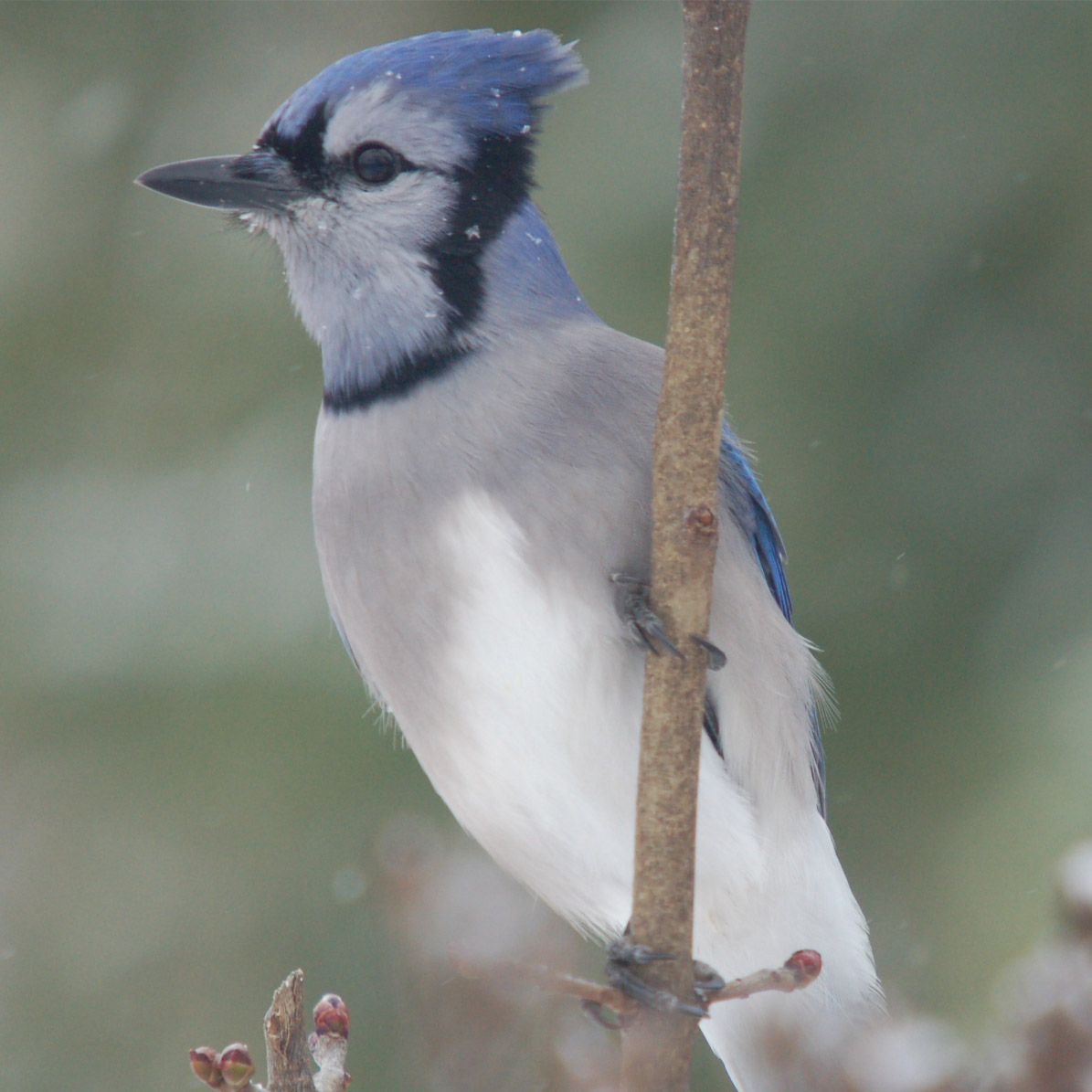
Photo by Paul Martin
Blue Jay (Cyanocitta cristata)
Vibrant and intelligent, known for its loud calls and mimicry. Nests in trees in wooded areas and suburban yards, and is a year-round resident that adds color and personality to Kingston’s birdlife.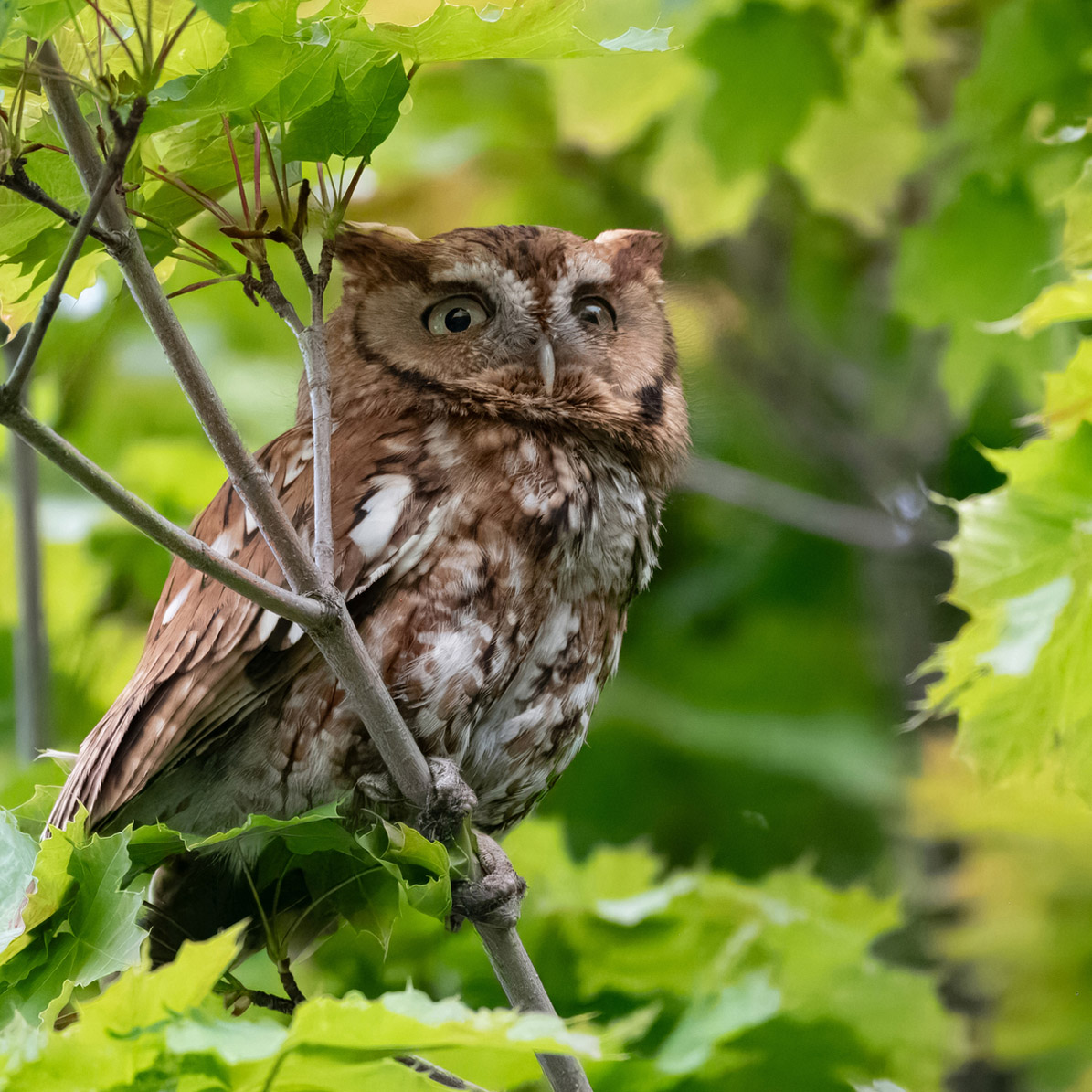
Eastern Screech-Owl (Megascops asio)
A small, camouflaged owl with a trilling or whinnying call, blending perfectly into tree bark. Nests in tree cavities and is more common in Kingston than many realize, often going unnoticed unless heard at night.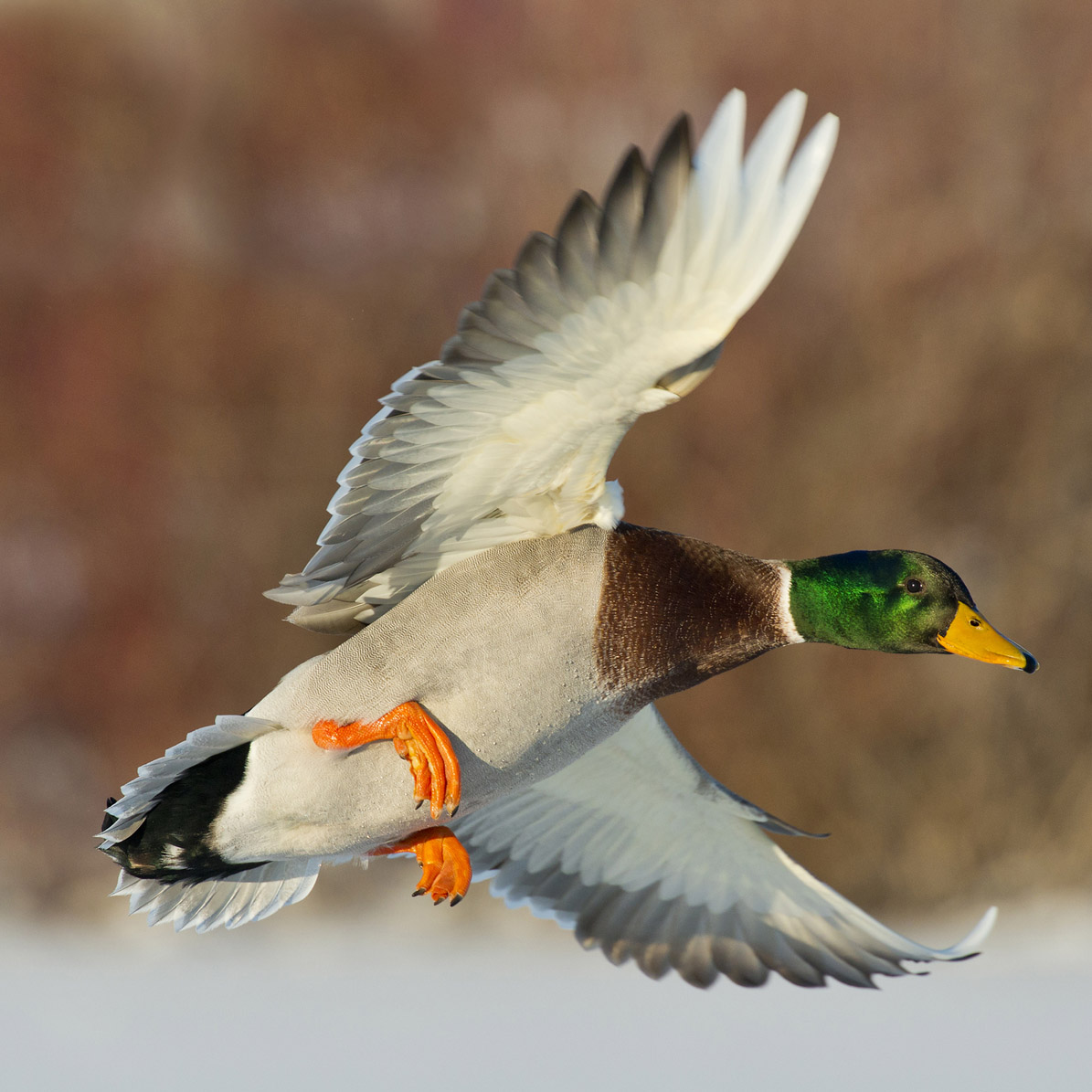
Mallard (Anas platyrhynchos)
A familiar dabbling duck in Kingston’s ponds, wetlands, and shoreline parks. Nests on the ground near water, often hidden in grass, and is a key species for engaging the public in urban and rural bird conservation.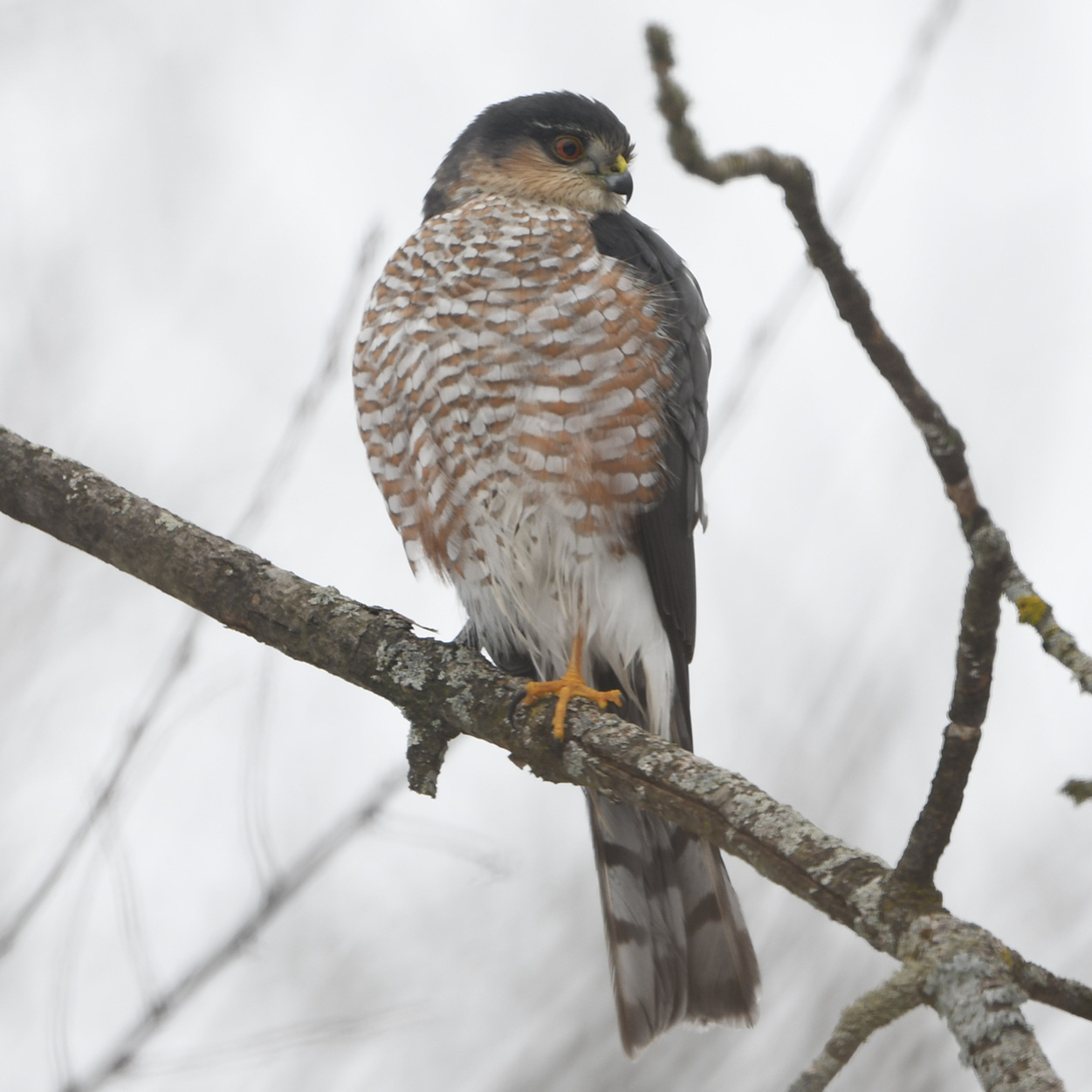
Photo by Paul Martin
Sharp-shinned Hawk (Accipiter striatus)
A small, agile hawk that darts through woodlands and backyards in pursuit of songbirds. Nests in dense conifer stands around Kingston, and its sudden, stealthy appearances at feeders are both thrilling and telling of a balanced predator–prey ecosystem.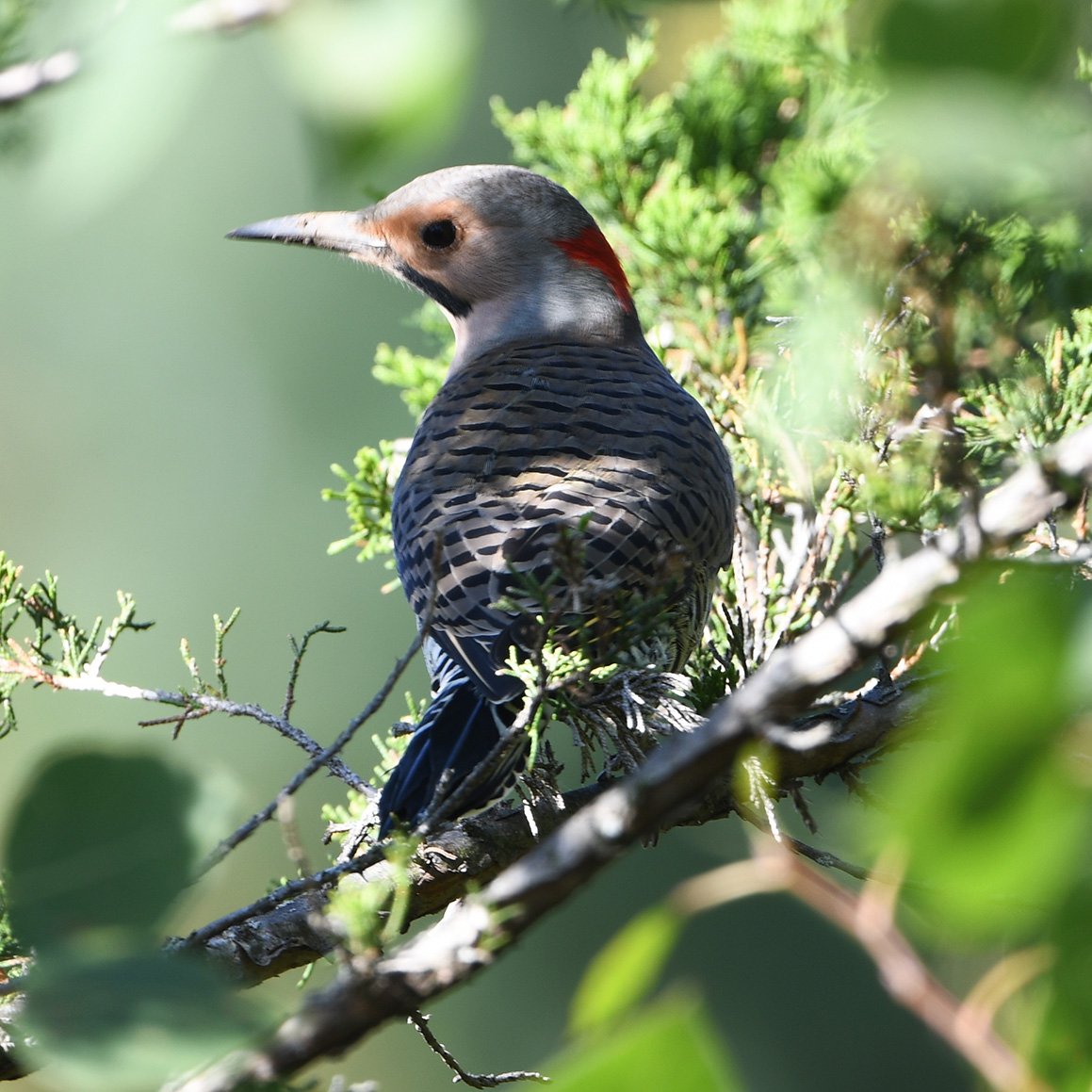
Photo by Paul Martin
Northern Flicker (Colaptes auratus)
A large, ground-foraging woodpecker with a golden flash in flight and a loud, ringing call. Nests in tree cavities, including nest boxes, and is a charismatic species often seen probing lawns for ants in Kingston’s parks and neighborhoods.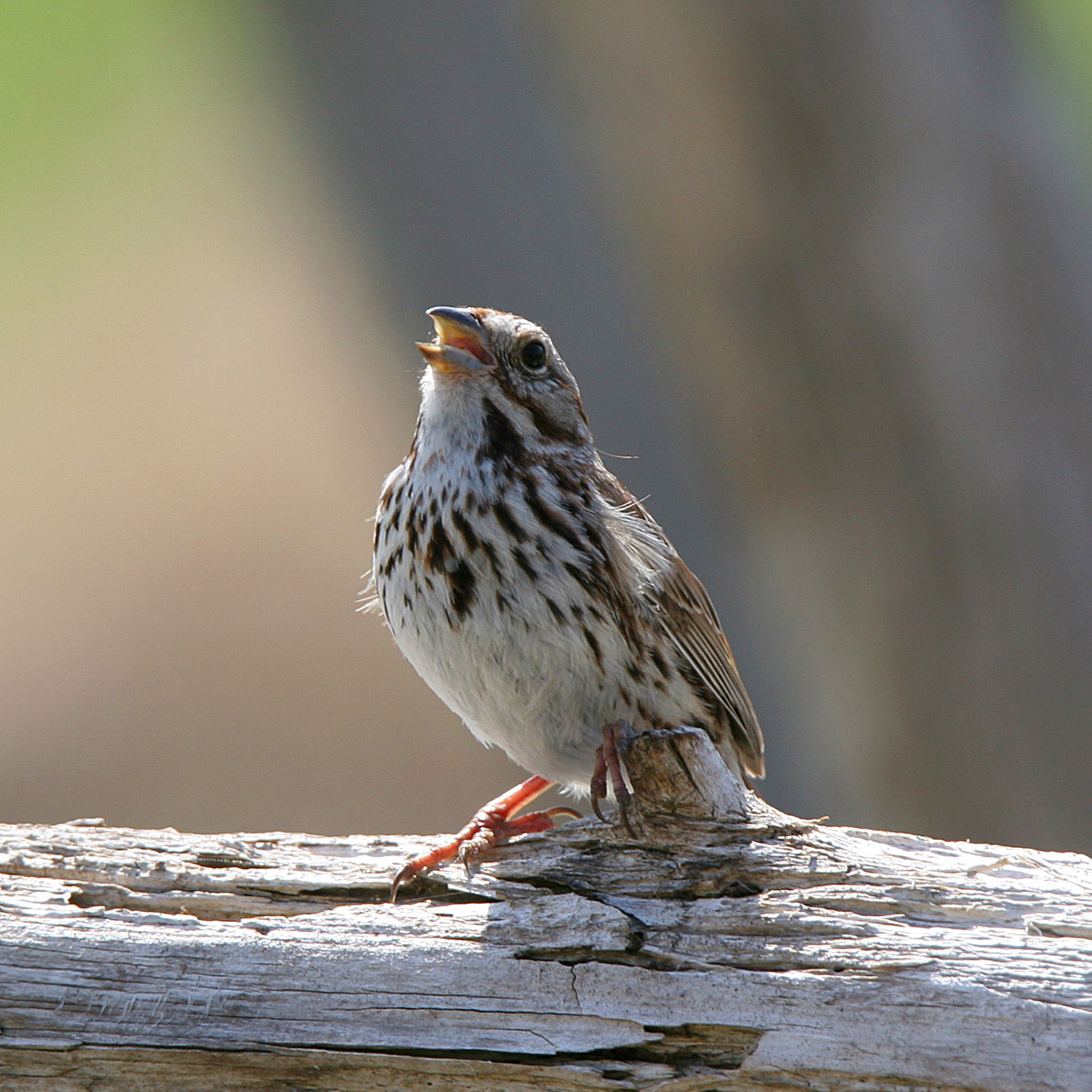
Photo by PG Bentz
Song Sparrow (Melospiza melodia)
A small, streaky-breasted songbird whose rich, melodic song is heard throughout spring and summer. Nests in shrubs or on the ground in gardens, fields, and wetlands, and is celebrated in Anishinaabe teachings as part of the seasonal rhythm of life.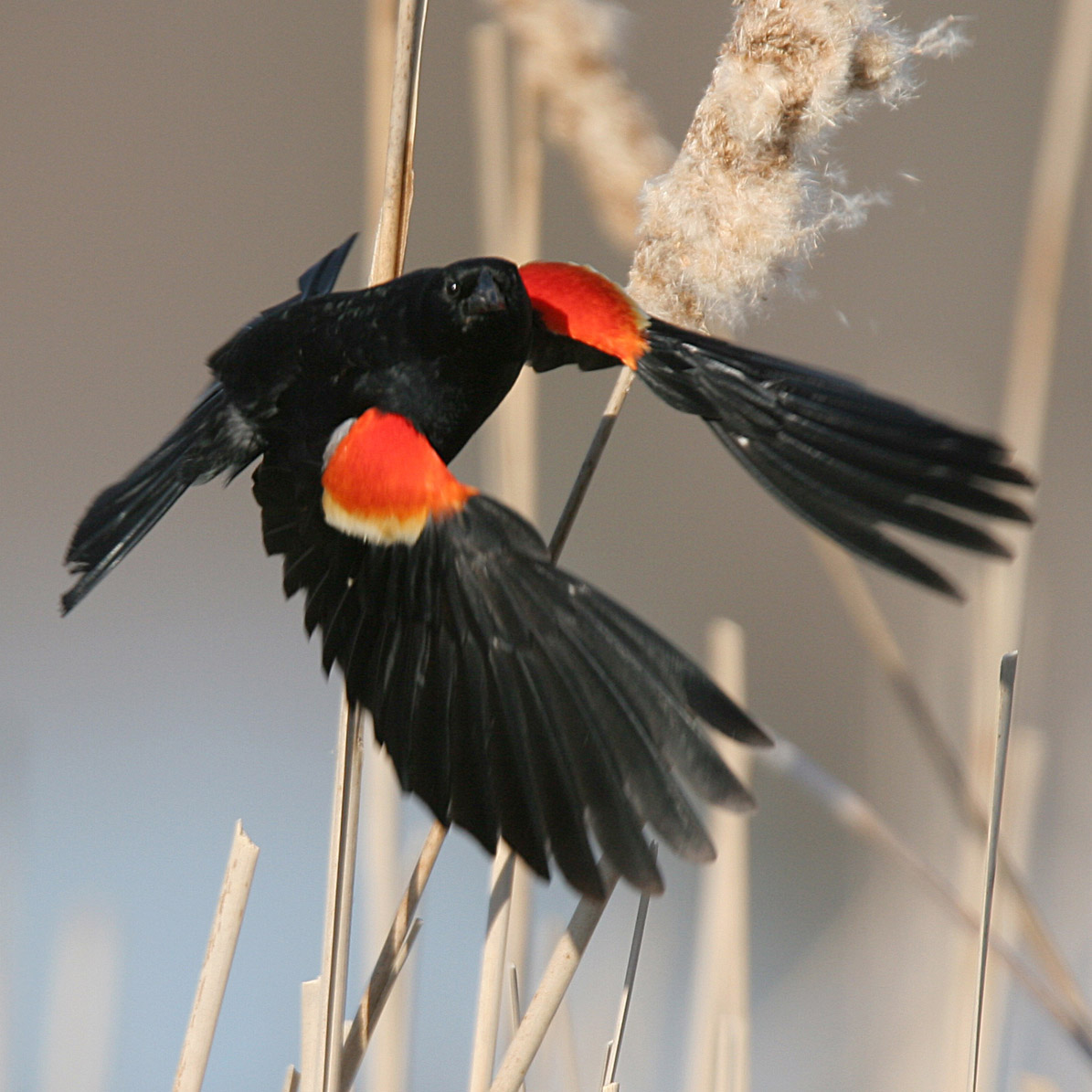
Photo by PG Bentz
Red-winged Blackbird (Agelaius phoeniceus)
A bold marsh sentinel flashing red epaulets while defending its territory. Nests low among cattails in Kingston’s wetlands, and its abundance makes it a key indicator of marsh health.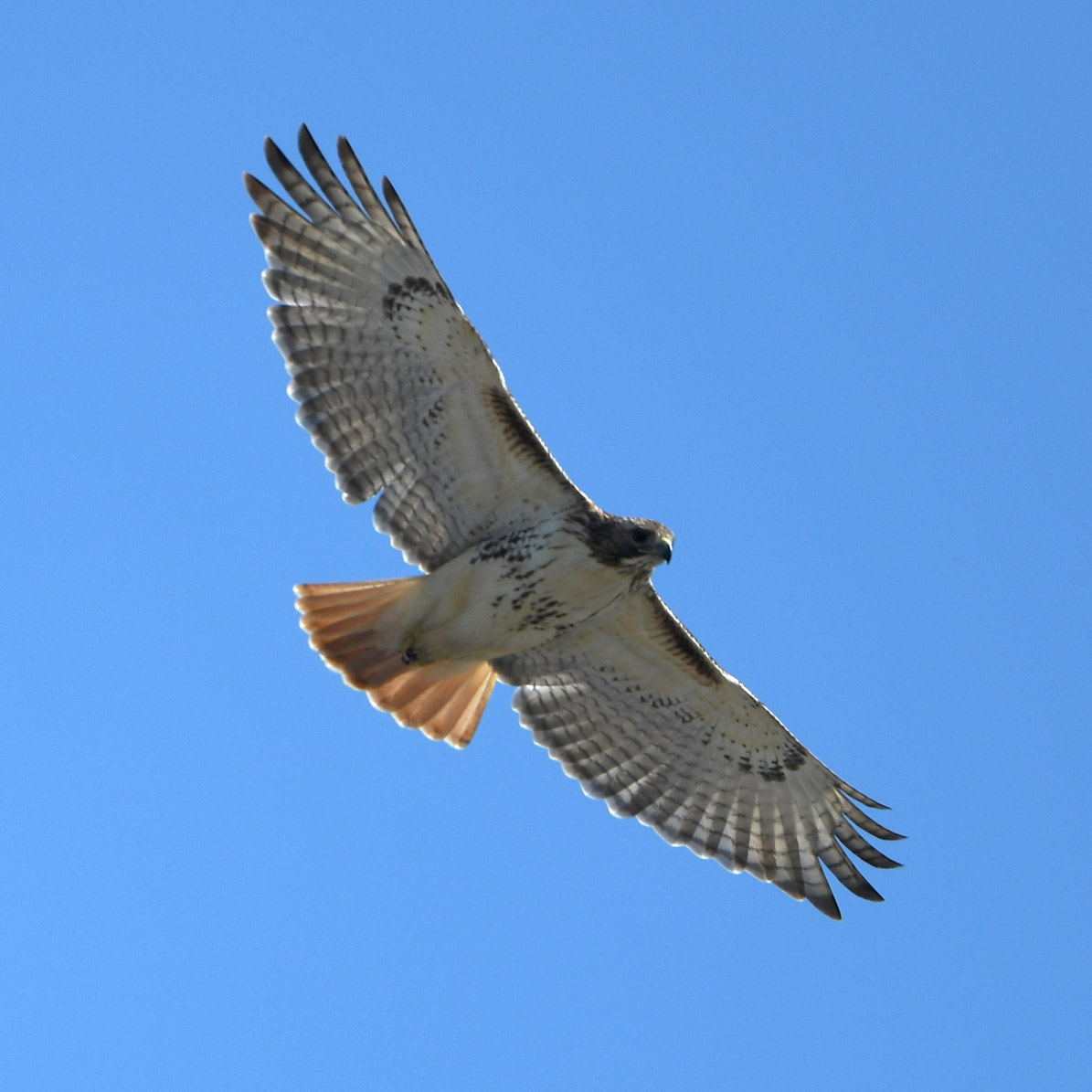
Photo by Paul Martin
Red-tailed Hawk (Buteo jamaicensis)
A broad-winged raptor often seen soaring over Kingston’s fields and highways, its piercing cry is a hallmark of open country. Nests high in tall trees or on cliff ledges, and is a reliable indicator of healthy open habitats in the region.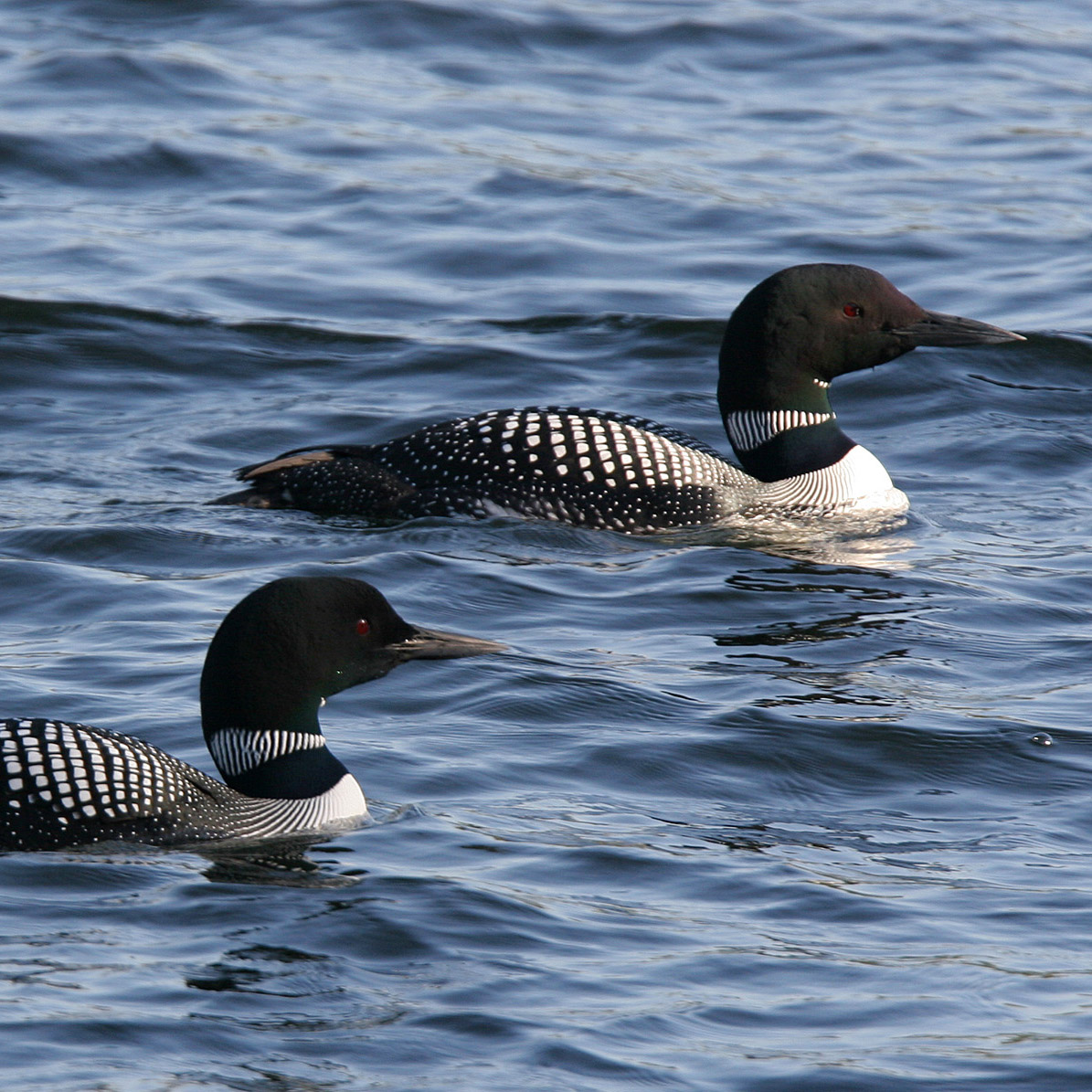
Photo by PG Bentz
Common Loon (Gavia immer)
A striking black-and-white diver whose haunting calls echo across Ontario’s lakes and occasionally Kingston’s quieter bays. Nests on the ground near the water’s edge, and is a cherished emblem of wilderness for cottagers and paddlers.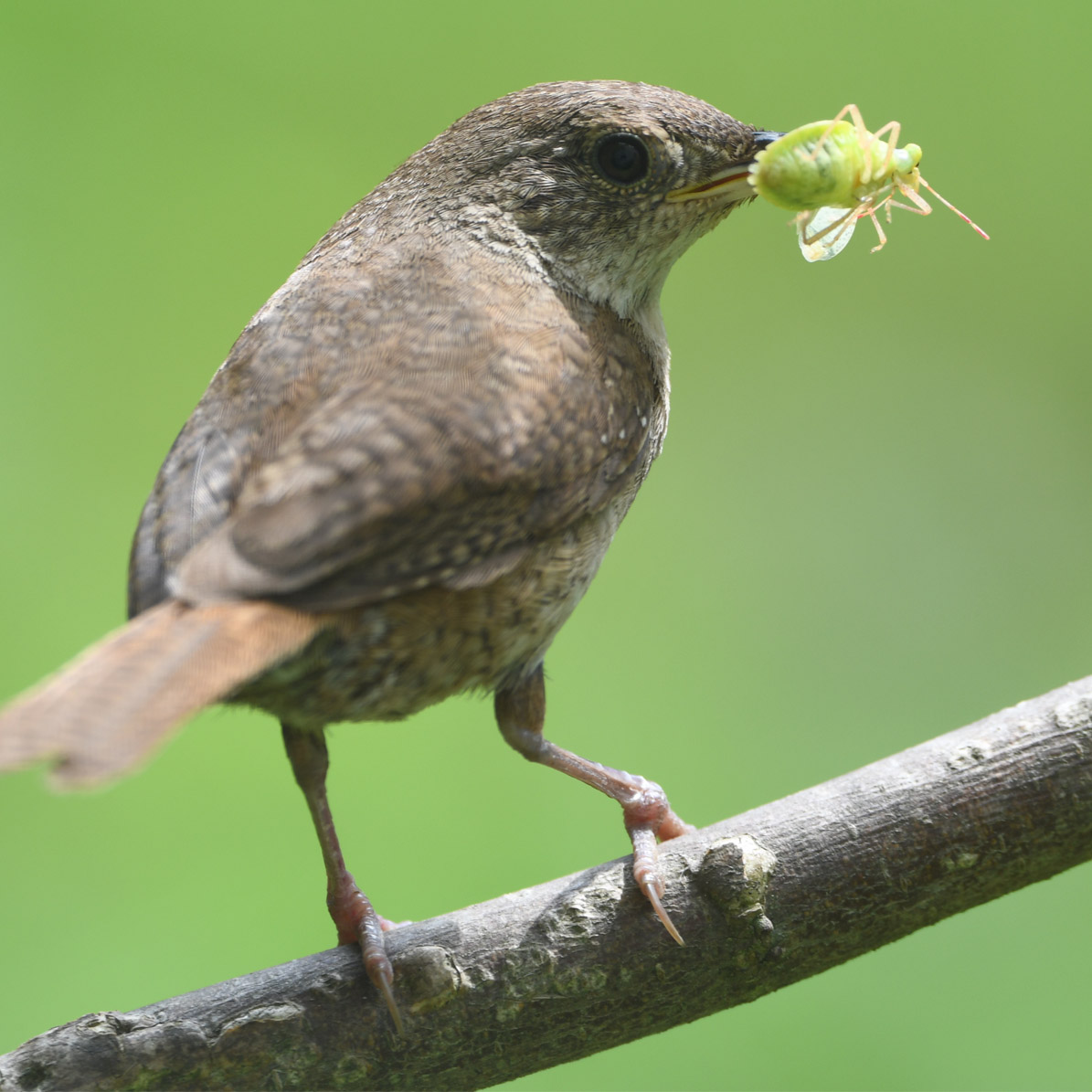
Photo by Paul Martin
House Wren (Troglodytes aedon)
Tiny, energetic, and feisty, with a bubbling song that fills backyards and thickets. Nests in cavities, nest boxes, or sheltered nooks, and thrives in Kingston’s urban and rural landscapes.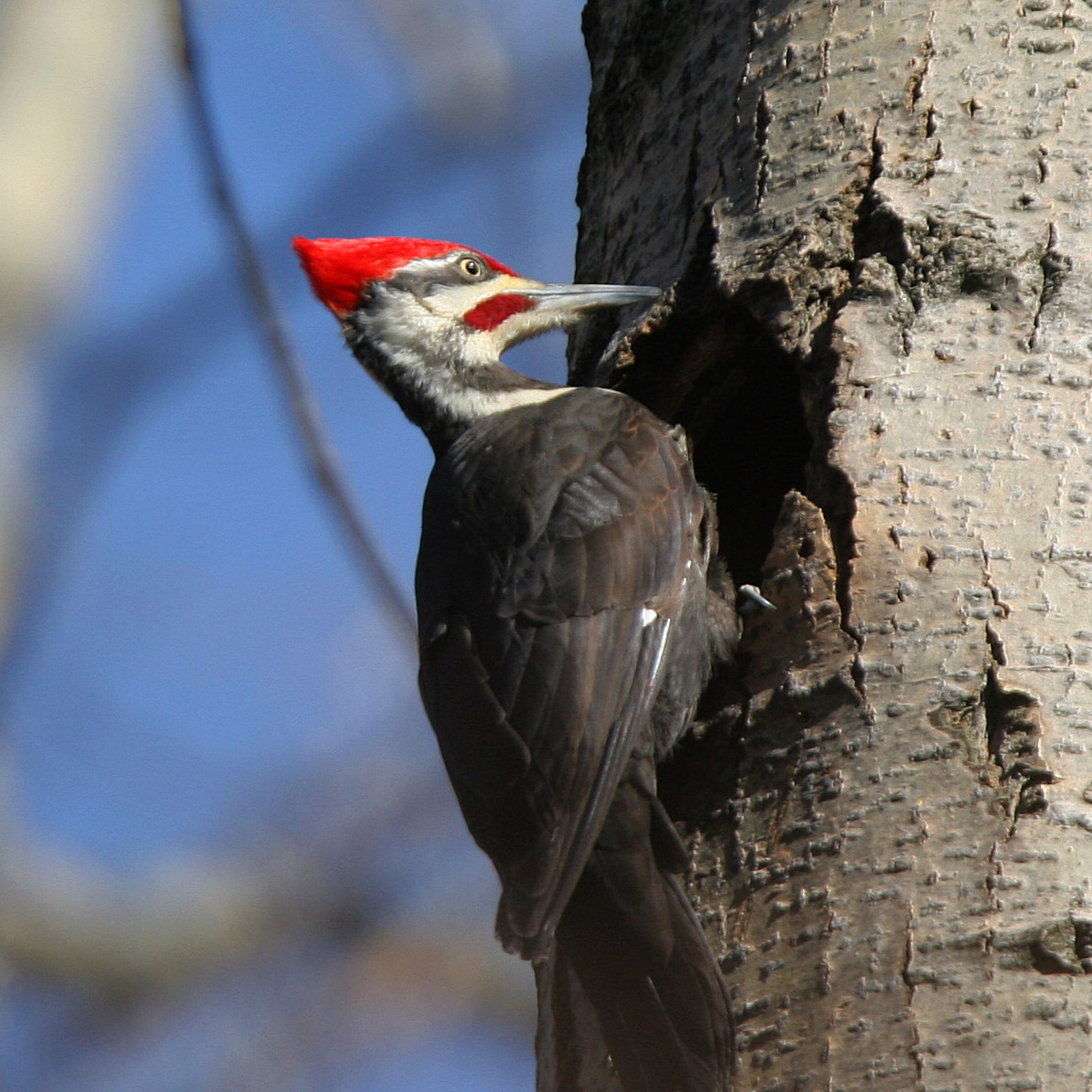
Photo by PG Bentz
Pileated Woodpecker (Dryocopus pileatus)
A crow-sized woodpecker with a flaming red crest and powerful bill, leaving large rectangular holes in trees. Nests in large cavities in mature forests, and plays a vital role in creating nesting sites for other species in Kingston’s woodlands.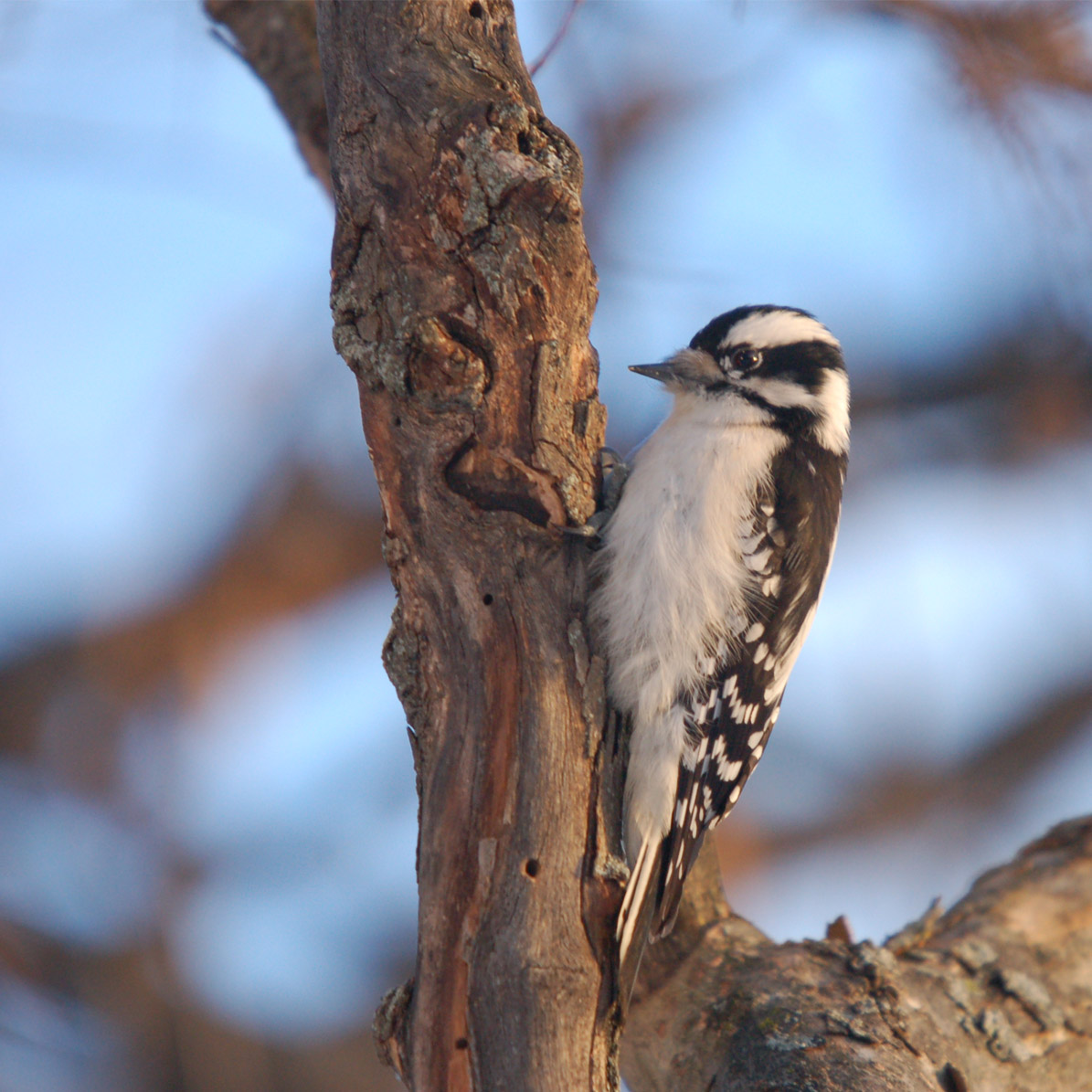
Photo by Paul Martin
Downy Woodpecker (Dryobates pubescens)
Small and active, with a short bill and a cheerful tapping in trees. Nests in small cavities in dead wood and is a common visitor to Kingston’s feeders, especially in winter.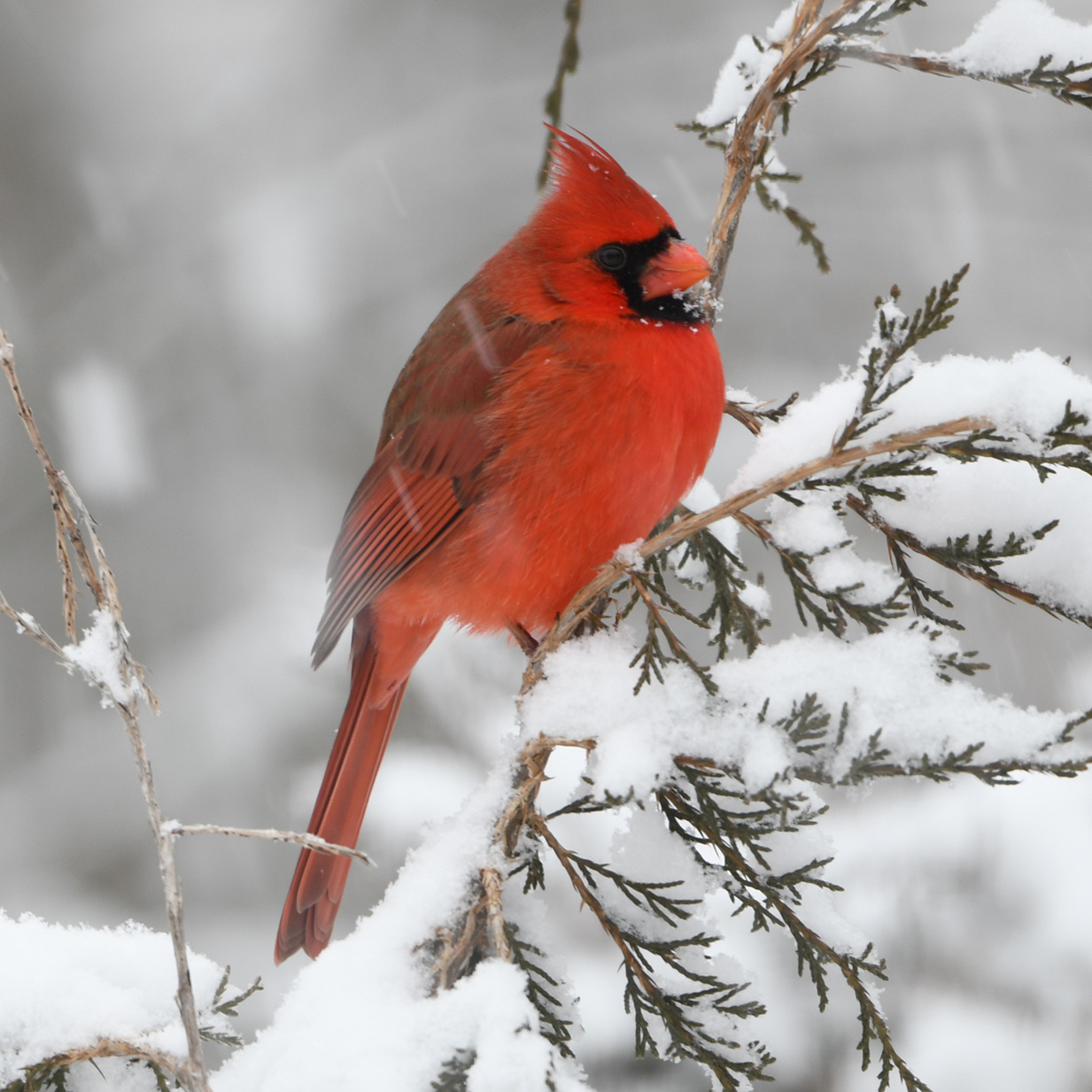
Photo by Paul Martin
Northern Cardinal (Cardinalis cardinalis)
Brilliant red in males and warm brown with red accents in females, both with a clear, whistled song. Nests in dense shrubs and is a favourite in Kingston’s gardens and feeders, symbolizing beauty and resilience through the winter.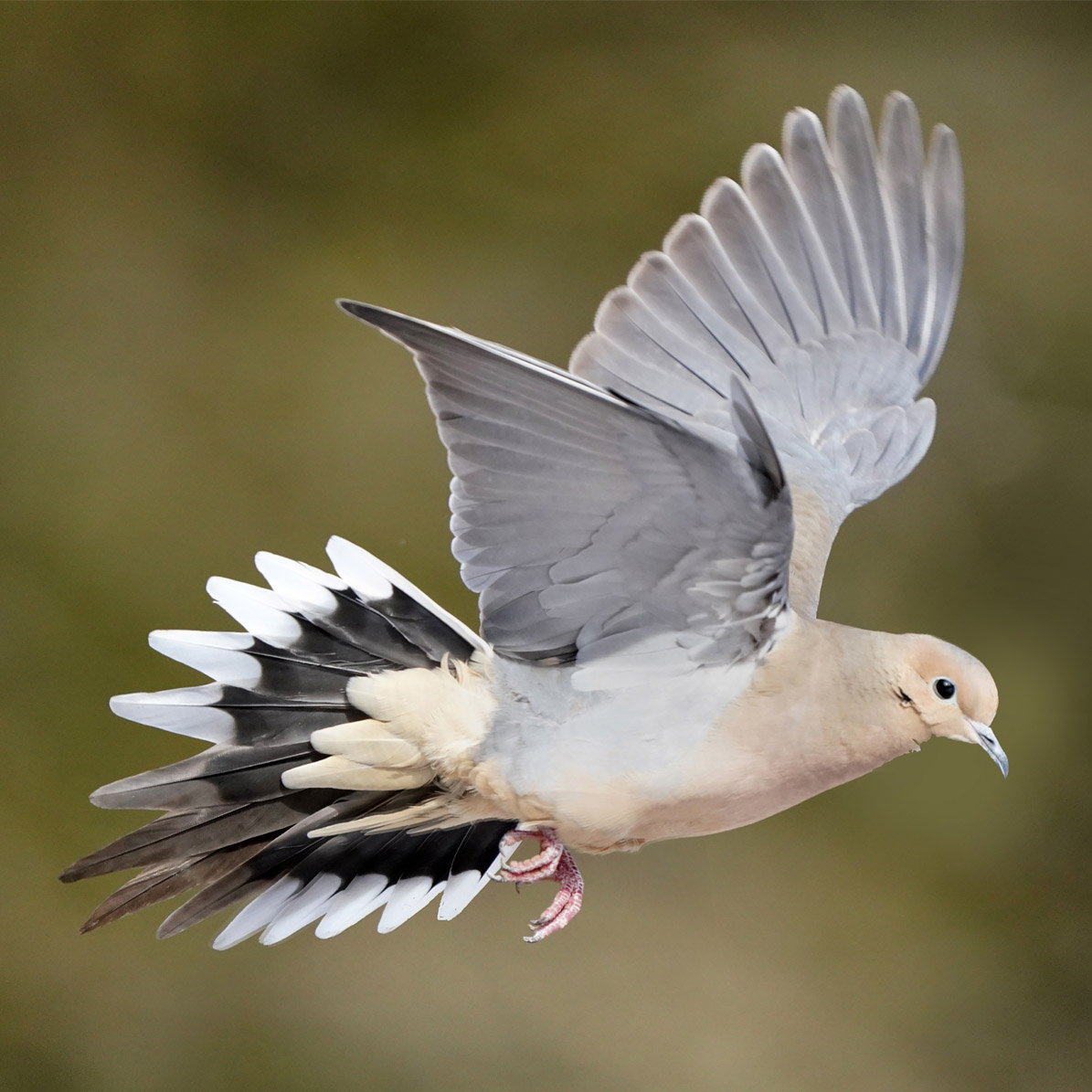
Mourning Dove (Zenaida macroura)
Graceful and gentle, with a soft, mournful coo. Nests in trees, shrubs, or even on building ledges, and is a familiar presence in Kingston’s gardens and open spaces, symbolizing peace and seasonal change.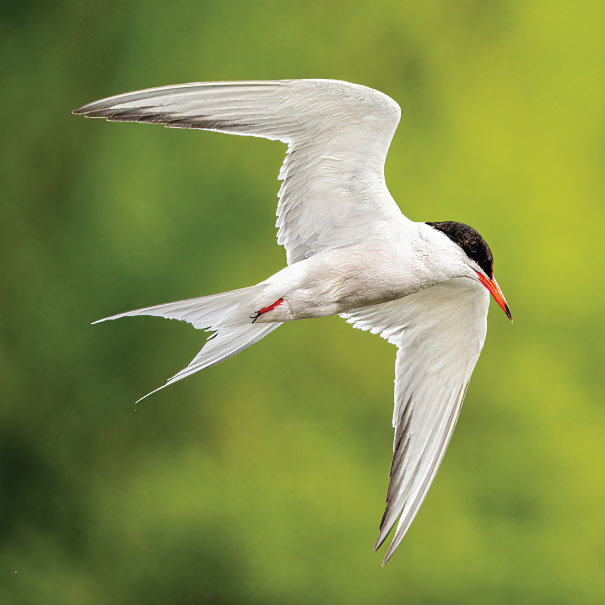
Common Tern (Sterna hirundo)
A sleek, graceful seabird with a sharp bill and buoyant flight, often seen diving for fish in Kingston’s bays and along Lake Ontario. Nests on gravelly islands or flat rooftops near water, and its presence reflects the health of local aquatic ecosystems.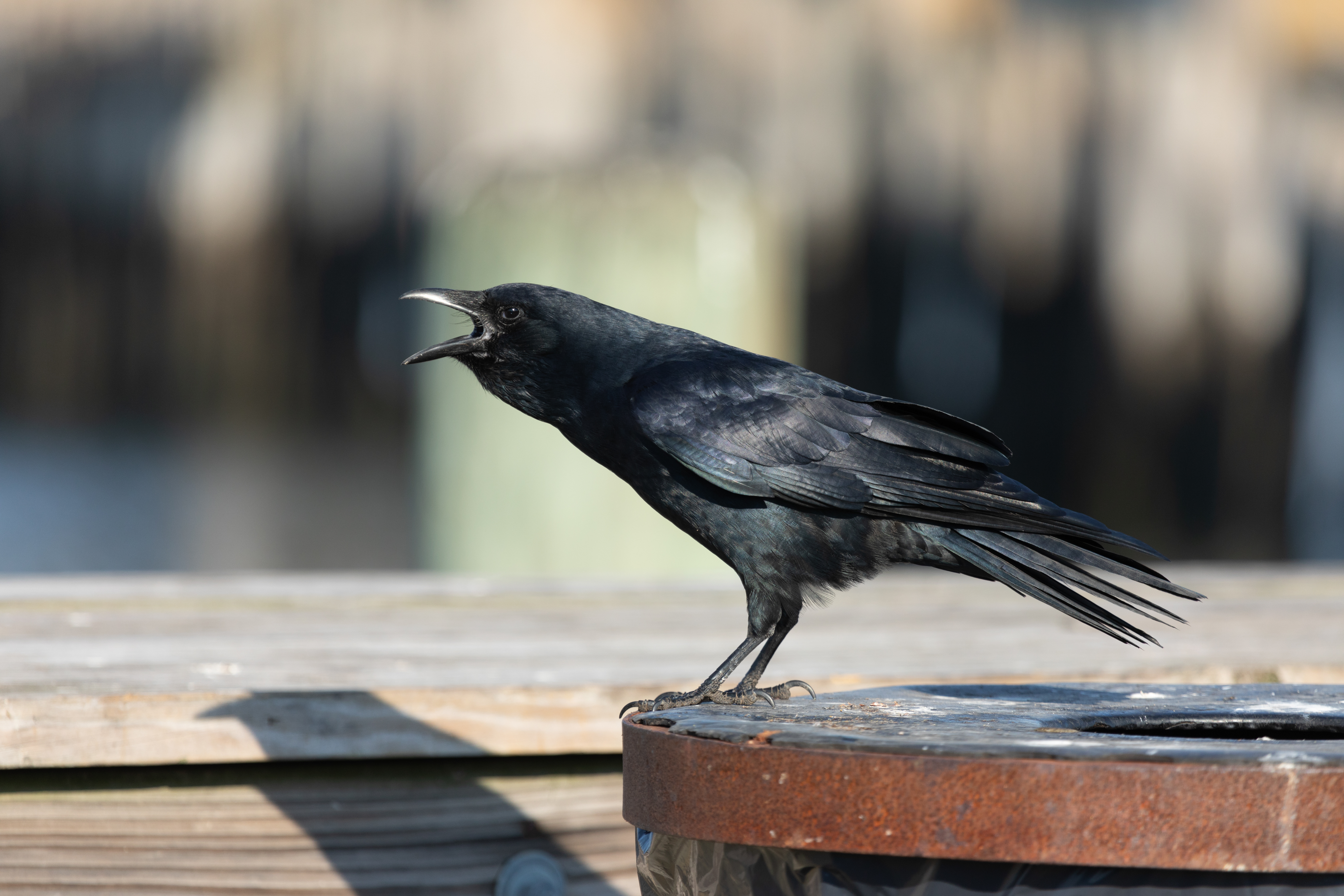
American Crow (Corvus brachyrhynchos)
A highly intelligent and adaptable bird known for its all-black plumage, loud cawing calls and complex social behaviors, the crow is ecologically and culturally significant. In Kingston, crows are especially notable during the fall and winter months, when thousands of them gather in large communal roosts within the city.
Who's Listening
-
Director, Public Works & Solid Waste
KS
Key Dates
-
September 11 → October 03 2025
-
October 11 2025
Notice of Collection
All information received will be compiled and considered by staff for use under the purposes of this site. Information will be collected and used in accordance with the Municipal Freedom of Information and Protection of Privacy Act and other relevant privacy legislation. All comments made on this site are available to the public and may form part of public records.